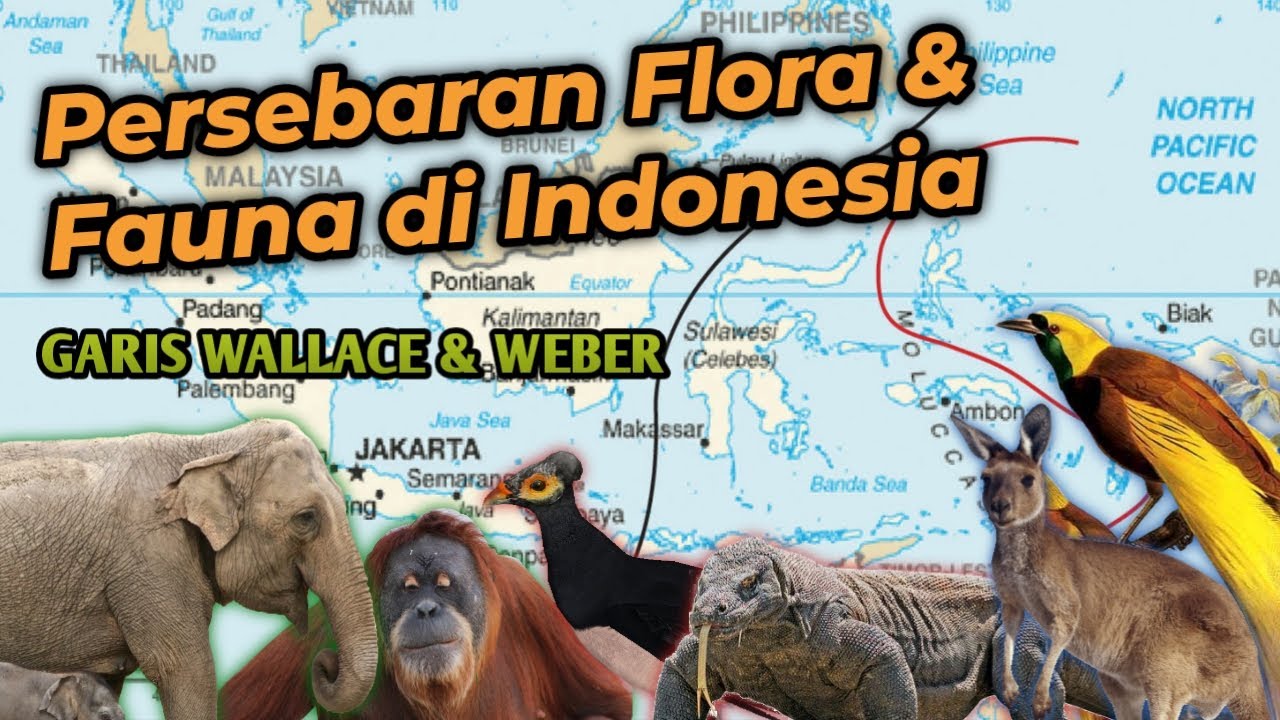Biodiversity of Indonesia
Summary
TLDRIndonesia, recognized as a megabiodiversity country, faces high threats to its rich flora and fauna. The Directorate General of Biodiversity Conservation under the Ministry of Environment and Forestry strives to conserve this diversity through in-situ and ex-situ conservation strategies, as mandated by the 1990 law. Efforts include managing genetic resources and combating invasive species to protect local species and ecosystems. Collaboration is key in addressing environmental damage, preventing zoonotic diseases, and upholding international commitments like the CBD and Ramsar Convention. The success of these conservation efforts relies on the support of various stakeholders, including local institutions and the broader community.
Takeaways
- 🌱 Indonesia is recognized as a 'megabiodiversity country' with rich flora and fauna resources.
- 🔥 The country faces high threats to its biodiversity, including species extinction.
- 🛡️ The Directorate General of Biodiversity Conservation under the Ministry of Environment and Forestry is tasked with conserving Indonesia's biodiversity.
- 📜 Conservation efforts are based on Law No. 5 of 1990 concerning the conservation of living resources and ecosystems.
- 🌿 Strategies for conservation include in-situ and ex-situ conservation, focusing on the protection, rehabilitation, and sustainable use of ecosystems, species, and genetic resources.
- 🏞️ In-situ conservation activities are complemented by facilities needed to handle wildlife conflicts.
- 🌳 Ex-situ conservation is managed through conservation institutions and involves genetic resource management.
- ⚠️ Invasive alien species pose a significant threat, potentially causing local species decline and altering local vegetation and resource supplies.
- 🏥 Environmental damage can lead to human health issues due to zoonotic diseases, prompting collaborations to address these threats.
- 🤝 Conservation efforts by the Directorate, along with partners, demonstrate the government's commitment to implementing international agreements and regional cooperation, such as the Convention on Biological Diversity (CBD) and ASEAN partnerships.
Q & A
What is Indonesia known for in terms of its natural resources?
-Indonesia is known as a megabiodiversity country, which is rich in natural resources, including a great diversity of flora and fauna.
What challenges does Indonesia face concerning its biodiversity?
-Indonesia faces high threats of extinction and loss of its biodiversity, which necessitates conservation efforts.
What is the role of the Directorate General of Biodiversity Conservation in Indonesia?
-The Directorate General of Biodiversity Conservation is responsible for implementing conservation strategies to protect ecosystems, species, and genetic diversity, as mandated by Law No. 5 of 1990.
What are the strategies employed by the Directorate General for conservation?
-Conservation strategies include in-situ and ex-situ conservation, with in-situ conservation involving activities to protect ecosystems and manage conflicts with wildlife, while ex-situ conservation is carried out by managing conservation institutions.
What does 'in-situ conservation' refer to in the context of the script?
-In-situ conservation refers to the protection of species in their natural habitats, which is complemented by facilities and infrastructure to address wildlife conflicts.
Why is ex-situ conservation important according to the script?
-Ex-situ conservation is important as it serves as a support to in-situ conservation, particularly when there are threats to species that cannot be addressed solely by in-situ measures.
How does the script address the issue of invasive species in Indonesia?
-The script mentions that invasive species can cause significant damage to local species and resources, leading to the need for their eradication to protect local biodiversity.
What is the potential impact of environmental damage on human health as mentioned in the script?
-Environmental damage can lead to zoonotic diseases, which pose a threat to human health, hence the development of collaborative efforts to address these threats.
What international commitments and collaborations are mentioned in the script regarding biodiversity conservation?
-The script refers to international commitments such as the Convention on International Trade in Endangered Species of Wild Fauna and Flora (CITES), the Convention on Biological Diversity (CBD), the Cartagena Protocol, the Nagoya Protocol, and the Ramsar Convention, as well as regional cooperation within ASEAN and partnerships.
What role does the community play in the conservation efforts mentioned in the script?
-The script emphasizes the importance of community support and involvement, along with the role of conservation institutions and individuals directly interacting with nature, in the collective effort to protect and manage Indonesia's biodiversity.
What is the message conveyed about the future of biodiversity conservation in Indonesia?
-The script conveys a message of commitment and the need for continued efforts from various stakeholders, including government, institutions, and the public, to safeguard Indonesia's biodiversity for future generations.
Outlines

此内容仅限付费用户访问。 请升级后访问。
立即升级Mindmap

此内容仅限付费用户访问。 请升级后访问。
立即升级Keywords

此内容仅限付费用户访问。 请升级后访问。
立即升级Highlights

此内容仅限付费用户访问。 请升级后访问。
立即升级Transcripts

此内容仅限付费用户访问。 请升级后访问。
立即升级浏览更多相关视频

PERSEBARAN FLORA DAN FAUNA DI INDONESIA

Lecture: Introduction to California's floral diversity

Persebaran Flora dan Fauna di Indonesia | Keanekaragaman Hayati Indonesia |Upaya Pelestarian Kehati

Keanekaragaman Hayati Indonesia

Garis Wallace dan Weber - Persebaran Flora & Fauna di Indonesia | Dunia Biologi

BAGAIMANA KEADAAN INDONESIA DAN LETAK GEOGRAFISNYA
5.0 / 5 (0 votes)
